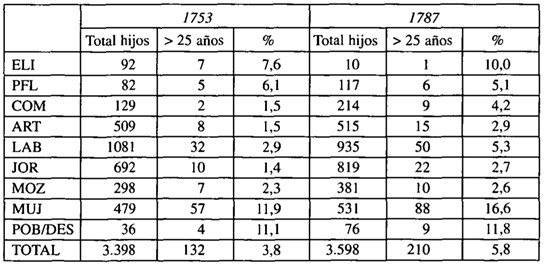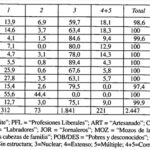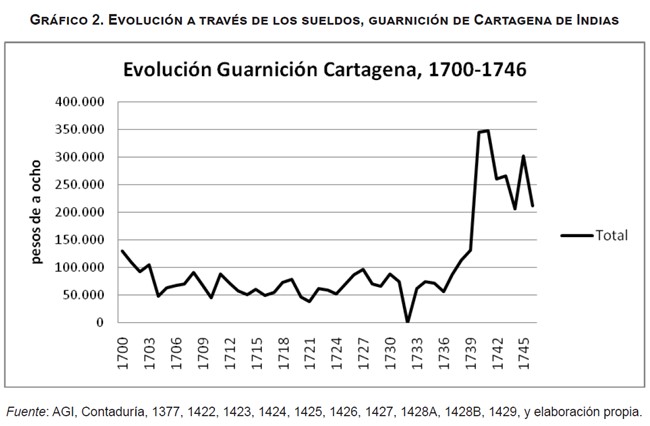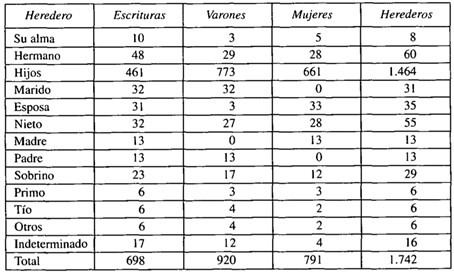
The socio-professional group to which one belonged tended to determine the structure of the household. An example of this is the data provided by the Cadastre of the Marqués de la Ensenada for the study of the Sierra de Alcaraz (1753). By professions, farmers, tradesmen and, above all, the groups in the administration and liberal professions have a higher proportion of complex households than day labourers and wage earners. The county average is set by the crafts and trades sector. From these groups, women and farm and livestock labourers, together with the clergy, make up the majority of the solitary household figures. In the formation of the different family groups, numerous variables appear, such as material wealth, status, mentality, family and individual projection, all of which are reflected in the trades carried out by the heads of the family.
Collection: Statistics
Project: 3. Rural world and urban world in the formation of the European identity., 4. Family, daily life and social inequality in Europe.
Chronology: XVIII
Scope: Secondary Education, Baccalaureate, University
Resource type: Statistics
Format: Table
Source: García González, F. (2000). Las estrategias de la diferencia. Familia y reproducción social en la Sierra. (Alcaraz, siglo XVIII). Madrid: Ministerio de Agricultura, Pesca y Alimentación, p. 118.
Language: Spanish
Date: 2000
Owner: Pablo Ballesta Fernández (Modernalia)
Copyright: ©Ministerio de Agricultura, Pesca y Alimentación ©Francisco García González ©Seminario de Historia Social de la Población
Abstract: Household structure according to the activities carried out by the head of the household. Occupation determined the composition of the family.
Image
Tags







